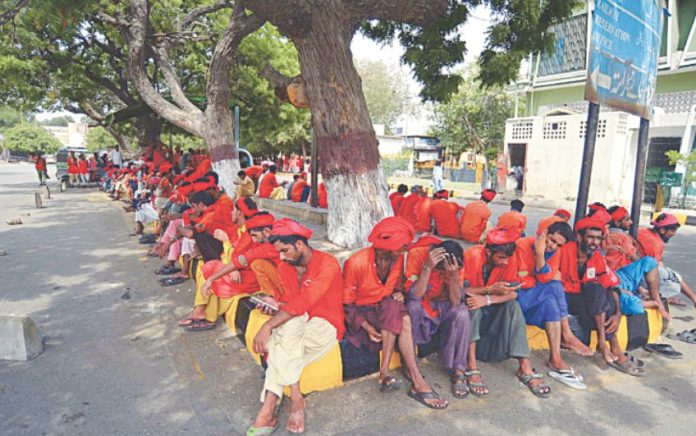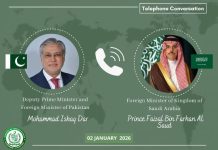KARACHI, JUL 2: As citizens heaved a sigh of relief with restoration of the sea breeze on Monday, the low atmospheric pressure area that brought a severe heatwave in the city made its presence felt again on the night between Sunday and Monday as it was recorded as the warmest night of the month of July in over six decades.
According to the Met department, the minimum temperature recorded on the night of July 1 was 32 degrees Celsius with 70 per cent relative humidity.
“It’s the remnants of the low pressure area still prevailing over the Indian Gujarat that influenced Karachi’s weather,” Chief Meteorologist Dr Sardar Sarfaraz explained.
Declaring the night between Sunday and Monday as “the warmest night” since 1960, he added that the Met department had digitised meteorological records from 1960 onwards.
According to him, the warmest night of the month of July was earlier recorded three to four years back with 31°C.
“With the resumption of the sea breeze, temperature is likely to drop in the city in coming days, though weather will be hot and humid,” he said, adding that there seemed no chances of rain at least till July 8 in Karachi.
On Monday, the Met department recorded 38.1°C —a deviation of 4.5°C from the monthly average temperature of July — as the maximum temperature with 60pc relative humidity.
The monthly average temperature of July is 33.6°C.
According to experts, the heatwave that lasted from June 23 till June 30 was the hottest period in the city after the 2015 heatwave that killed more than 1,200 people and made hundreds others ill.
No heatstroke death
For the first time in the last eight days of the severe heatwave, no death from heatstroke was reported from the Jinnah Postgraduate Medical Centre (JPMC), Dr Ruth Pfau Civil Hospital Karachi, Indus Hospital (CHK) and Abbasi Shaheeh Hospital (ASH) on Monday.
Heatstroke patients, however, reported in small numbers at the emergency department of these hospitals.
Sources said though no official figures were available on the actual number of heatstroke mortalities, more than 60 patients either died from the illness at the four tertiary care hospitals or brought dead.
They said that the actual number of cases was much higher as rescue services and non-profit welfare organisations last week reported a three- to four-fold increase in the number of bodies routinely received at their morgues.
Most of the victims were brought by their families, they said.
“In 2015 heatwave, the majority of patients reported to us with diarrhoea along with some other complaints. This time, however, high fever was the most common complaint followed by other signs and symptoms,” shared Dr Imran Sarwar G. Sheikh, who heads the emergency department at the CHK.
“Most patients came with 105°F to 106°F temperature that was something we have never seen before. I can’t give the reason behind this pattern right away but believe that the viral fevers already prevailing in city’s population might have played a role,” he told Dawn.
According to Dr Sheikh, viral fevers especially dengue and chikungunya had already affected people in significant numbers when the heatwave hit the city. “We have been seeing cases of vector-borne diseases during a time (pre-monsoon) period when they are not usually seen, at least not in these numbers.”
He pointed out that co-morbidity, as was in the case of Covid-19, was seen as a major risk factor in heatwave mortalities.
“The youngest patient who died was an 18-year-old girl suffering from epilepsy. She reported with high fever and died within two hours. Then, there was a case of a 25-year-old woman with five children. She was severely anaemic,” he said.

















